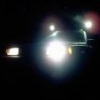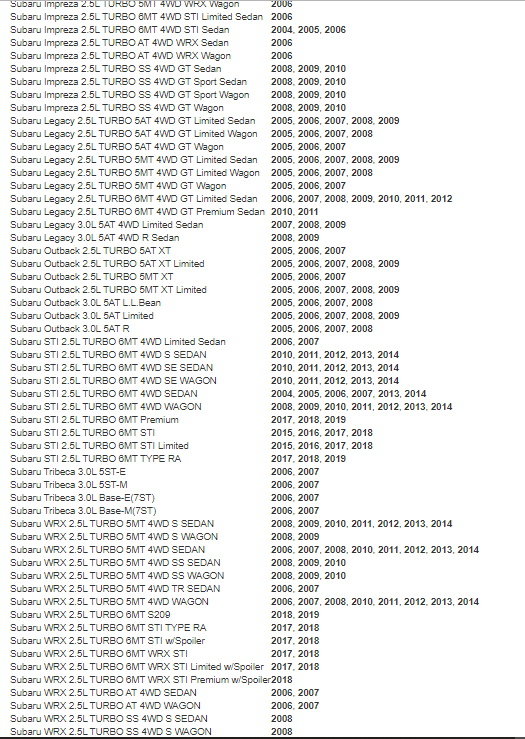-
Posts
7554 -
Joined
-
Last visited
-
Days Won
94
Content Type
Profiles
Forums
Gallery
Store
Everything posted by Numbchux
-
I didn't read the whole post, so forgive me if this is duplicate. The newer BE/BH Outbacks have a Body Integrated Unit that controls many functions, where the older ones do not. I modified both of ours ('04 and '00), so that the keyless system unlocks all 4 doors at the first click. On the '04, this had to be done at the Body unit under the steering column, and the '00 from the keyless module behind the glove box. Long story short, I think those systems are considerably different, and probably not easy to retrofit.
-
NiCopp is very forgiving, so I bet you had good luck with that style tool. I've fought with and broken those working with steel lines so many times. I started using Inline flaring tools, and will not go back. I've been using this one for years, but recently bought this one so I can do multiple sizes.
-

Driveshaft 88gl wagon
Numbchux replied to Lifted glwagon's topic in Old Gen.: 80's GL/DL/XT/Loyales...
No, in other parts of the world, a "driveshaft" is the axle shaft from the transmission/diff out to the hub, so that's what he's talking about. As long as it's an EA82 sedan ('85+ in the US) with the same transmission, yes, it'll work just fine. -

1992 Loyale cranks but no spark
Numbchux replied to Griffon's topic in Old Gen.: 80's GL/DL/XT/Loyales...
I had the optical crank sensor in the distributor fail once with no warning. I don't remember how to test it, but I had all the same symptoms you describe, and a "new" distributor solved it. Sorry I don't have more information, but it was more than 10 years ago....hopefully it gets you a direction that you can research/test. -
Because of the road salt used up here and the heat cycling, those things rust out so badly. Something wedged behind it will just cause the shield to break sooner. The senior master tech at the dealership told me that they're there to keep the heat in the exhaust so the catalytic converters are more efficient. Whether that's the reason or not, I've pulled them off a dozen cars with no noticeable effects.
-

New member with overland build decision
Numbchux replied to NWlifer's topic in Meet n' Greet. Your USMB Welcome Center
The Outback will have a 2.5l, unless it's been swapped. This engine is not nearly as reliable as the 2.2. The Outback will have more ground clearance (of course, both can be lifted to your hearts content, but the Outback may not need it for mild use). Torque converter (automatic) gives much more torque and control at slow speed. Manual has better AWD. Legacy chassis is physically bigger. Those Impreza wagons have sort of a goofy smaller rear hatch opening. If the Outback has the cold weather package (heated seats, mirrors, windshield), it'll have a rear LSD. -
3.7s definitely exist, even in the PT4WD. AFAIK, they're all in turbo cars, though, which would have 25 spline axle stubs. So if you were able to get non-turbo axles on there, you're probably OK.
-
Only if they had A/C (which most of them did). But they still had the mechanical. I ran a couple with just the A/C fan, but here in northern MN, we're not pushing cooling systems very hard. In AZ, I don't think you'd get away with that. Yea, remove it, measure the opening, buy a universal electric fan. Either use the included mounting "hardware" that pulls through the radiator (puts a little extra strain/vibration into your radiator, frequently it's fine), or make some brackets. Wire it through a relay, and either use a toggle switch, or you can utilize the factory switch for the existing electric fan (that one is wired without a relay, I would not put the load of 2 fans through it, though).
-
Yep, without disassembling your transmission, you cannot get all the fluid out. So you get 1/3-1/2 out, run it to mix the old with the new, and repeat. You can just do a single drain-and-fill, but do it often, or if it's long overdue, do a few consecutively. This is why there are flushing machines that hook up to the cooler lines to completely replace the fluid with fresh as the old is pumped out of the trans (expensive, overkill, and frequently can require replacing those cooler hoses after they've been messed with). It calls for Dexron II. Which was replaced with Dexron II. Dex/Merc covers that, and is by far the most common ATF you can buy. I buy 2.5 gallon jugs of it at the local farm/fleet store for about $1.50/qt, and do a partial change every 10k to keep it fresh (my philosophy is the best fluid is new fluid). Subaru HP is a synthetic fluid designed for the ~'08+ cars that is backwards compatible, that's probably the best fluid you can buy. There are probably dozens of options, and thousands of opinions on what's best. I did a bunch of searching about the filter, the OE one is surprisingly expensive ($40? IIRC), and there are a bunch of aftermarket part numbers that will fit for cheap (<$10). Most appeared to be an engine oil filter, with a very different micron rating than OE (forgive me, it's probably been 5 years since I did the homework). Ultimately, I decided that it was OE only, which is not like me. FYI it's a spin-on filter, mounted behind the bumper/fog light on the LH side. You have to undo a few of the clips, and peel back the front edge of the fender liner from the bumper to get to it.
-
Here's my 2 cents. Those screens saved you once (without them, the debris you found would have likely made it to your turbo, and if left unchecked even longer, debris from your failing turbo will be introduced into your engine...). Keep them in place, be extremely vigilant with your oil changes, and you won't have an issue. Also, I'm pretty sure all turbo AVCS EJ Subarus have those. The later FA20 cars do not, but are a very different system.
-
NiCopp. $50-75 in stores, about 20 on amazon. I have several rolls on the work bench at any time. I also spend the money on stainless fittings from "the stop shop" (on their website, or through Amazon. And an inline flaring tool. I used this one for years, then bought this one when I needed more sizes.
-
Yea, it would eventually be running off. Depending exactly where the leak is, it might take awhile to be visible. But with your symptoms, I was expecting an empty reservoir. Any leak would leave fluid, and not terribly difficult to see, so I don't think that is your issue. I suppose it's possible to have a catastrophic master failure.
-
Just because it's cutting power to the "acc" circuit doesn't tell you anything about the condition of the contacts in the "ST" circuit. I'd get the multimeter out and test for power coming out of it in that position. I wouldn't be surprised if it's nothing. Ignition and inhibitor switches have almost identical function, they can fail without warning.
-
Start circuit on that is not run through any relays other than the solenoid on the starter. Power before the ignition switch is shared, so the fact that it'll run, means that it's not a fuse or anything like that. It's either the ignition switch, inhibitor switch (on the side of the transmission, like you pictured), or a wiring break. Get out your multimeter and see where the power stops. The inhibitor switch has seperate contacts, so I've seen them fail in "Park", but still work in "Neutral". So if that doesn't work for you, I'd be inclined to ASSume ignition switch, but test it. Diagrams: http://jdmfsm.info/Auto/Japan/Subaru/Legacy_Outback/1995/1995 Legacy Wiring Diagrams.pdf Start circuit is on page 15. Super simple circuit.
-
How's the level in the reservoir? Do you loose fluid? Your's sounds like a fluid leak. Any other symptom I can think of would yield a spongy or hard pedal, but still functional. These are somewhat notorious as they get old for rusting out lines above the fuel tank, so look for brake fluid leaking down from that area, usually on the passenger side.
-
You put spacers between the crossmembers and body to lower the driveline and therefore lessen CV axle angles. The stock Outback that you took those struts off of had about 1" spacers on the subframes. Look up a lift kit for your car (sjr, adf, and others), and you'll see that higher lift heights require considerably more components.




